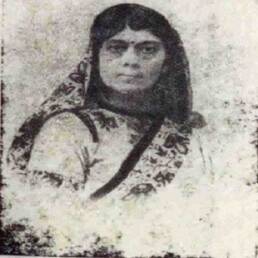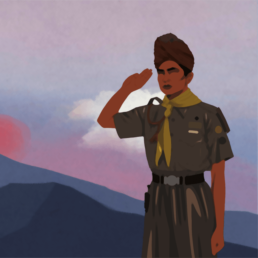Most of us would have watched the movie “The Great Escape” – a fictionalized take on the escape of Allied PoWs from German prison camp Stalag Luft III in 1944. Couple of years earlier, in another WW2 theater, three Indians plotted an equally daring escape.
On 15 February, 1942, British-held Singapore fell to Imperial Japan. It resulted in the largest British surrender in documented history. Approximately 85,000 British, Indian, Australian and other Allied soldiers were held captive by the Japanese.
Among them was a 31-year old Indian, Lt. Markandan “Mark” Pillai of Bombay Sappers & Miners. The situation was terrible. The Japanese were gunning down Chinese civilians by the hundreds, while British and Australian PoWs were regularly being beheaded.
Due to Capt. Mohan Singh’s talks with the Japanese to form an Indian National Army (INA) with Indian PoWs, Indians were largely spared. But inhumane living conditions in the camps, lack of food, and rampant attacks of malaria and cholera made it a living hell.
Moreover, the surviving PoWs faced a terrible future: working as slave laborers in Japanese efforts at building roads, bridges, and railway lines all over South East Asia. Lt. Pillai made up his mind to escape. His plan was to try and swim to Sumatra.
But the danger posed by the shark-infested waters made him change his mind. At this time, one of his colleagues gave him an international atlas. Pillai considered it a signal from above. He started studying the maps diligently.
Pillai had earlier befriended Radhakrishnan – an Indian lecturer at Singapore Trade School, who now joined him in his daring plan. They were soon joined by Capt. Natarajan, an army doctor. The trio decided to escape and travel 3,300 kilometers to the Indian border.
Their possessions amounted to $700 (of which $600 was provided by Radhakrishnan) and 11 anti-malarial pills. On May 6, 1942, Pillai and Natarajan escaped the camp and were joined by Radhakrishnan. They were dressed in shirts, dhotis, and caps.
The presence of a large South Indian diaspora in the Malayan peninsula stood in their favor. Posing as vegetable traders, they traveled to Penang by train. Hitching rides on trucks and then traveling by a goods train, they next arrived in Siam (Thailand).
However, their luck ran out in Siam as they were found without any legal documents and were soon arrested by the Siamese police. A local Tamilian businessman, however, bailed them out by securing for them a 30-day stay permit in exchange for $450.
The trio next decided to travel through the dense jungles of south Burma – infested with dangerous animals and snakes – to reach the Indian border. But Burma too was a theater of intense fighting between the Japanese and Allied forces.
Somehow, they evaded the fighting as well as the murderous bandits roving the countryside and reached Prome by the end of June. But by now, their money had been exhausted and their health was in ruins.
The Arakan border was still 100 miles to the west but to reach it they had to travel through deadly battle theaters. The only alternative was the longer and more dangerous trek north, through heavy forests and mountains, towards Assam.
Dr. Natarajan decided he had traveled enough and decided to stay back in Prome. Somehow, defying all odds, Pillai and Radhakrishnan made it close to the border – but an obstacle arose when they had to cross a water body.
Radhakrishnan could not swim and a boat they had managed to secure was seized by Japanese soldiers. Refusing to give up, Pillai tied himself to his companion with a thick rope and waded through to reach the other side.
Once ashore, they again resumed their trek through deeply forested hills. It was August 2nd when they finally stepped onto Indian territory.
However, they were soon confronted by an Indian patrol. As Pillai and Radhakrishnan tried to escape, fire from a machine gun, commandeered by a Sikh officer, grazed their feet. At the end of his tether by now, Pillai responded with the choicest Hindustani slangs.
The gaalis did the trick. The Sikh was convinced as to the stragglers’ identities. Nearly three months since they started from Singapore, defying death time and time again, Pillai and Radhakrishnan were finally back “home.”
As Radhakrishnan was a civilian and would not be allowed entry, Pillai introduced his companion as a Lieutenant in Singapore Volunteer Force – one that did not even exist! But the Indian patrol bought the story and the two men were whisked away to Delhi.
But the journey had taken its toll. Pillai had lost nearly 30 kilograms. Radhakrishnan never recovered from the ordeal and died a year later. Natarajan married a Burmese woman and settled down in Prome. He died there in 1951.
Lt. Pillai was awarded the Military Cross by Field Marshal Archibald Wavell for this daring escape. He was the first Allied soldier to escape the Japanese PoW camp in Singapore. He retired from the Army as a brigadier and breathed his last in 1988.
Source:
https://www.deccanherald.com/special-features/an-untold-world-war-ii-saga-1085099.html
https://2ndww.blogspot.com/2010/09/first-allied-pow-escape-from-singapore.html




